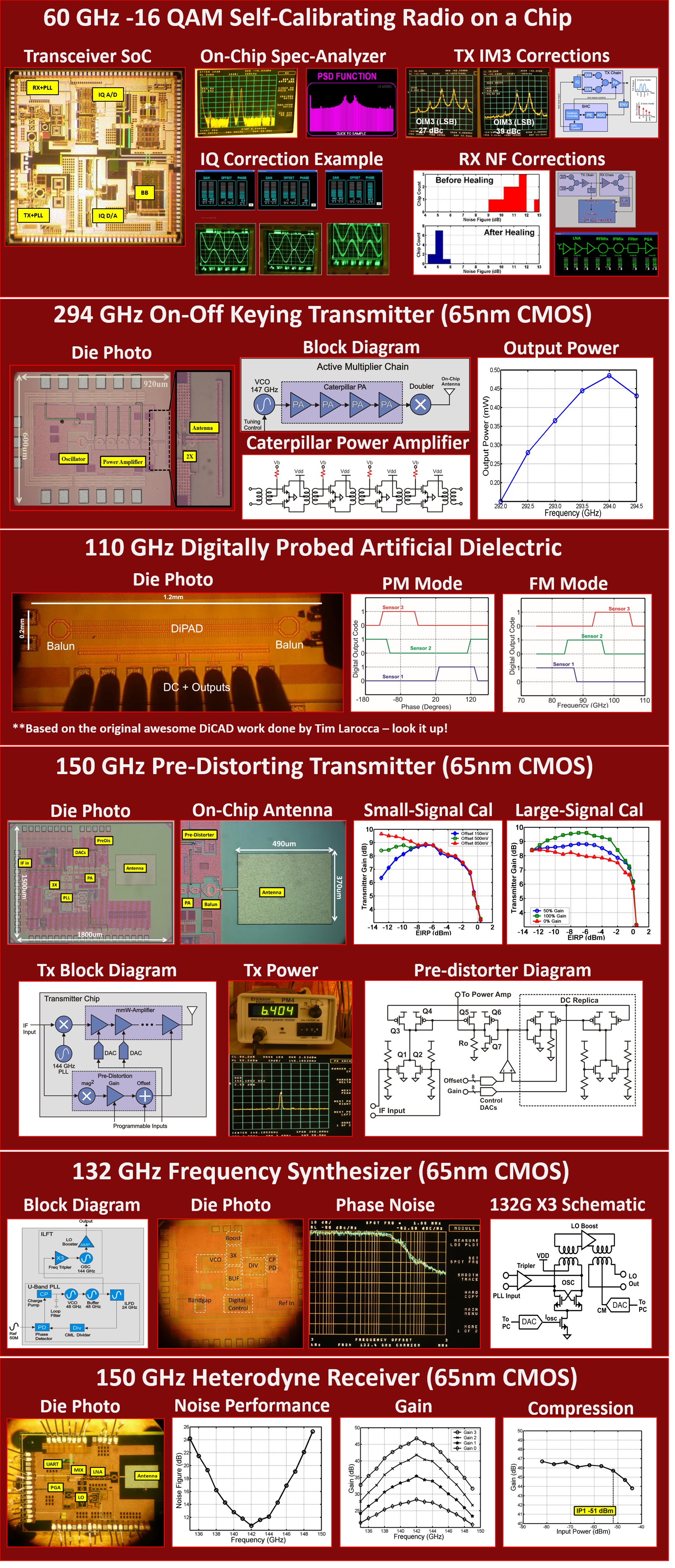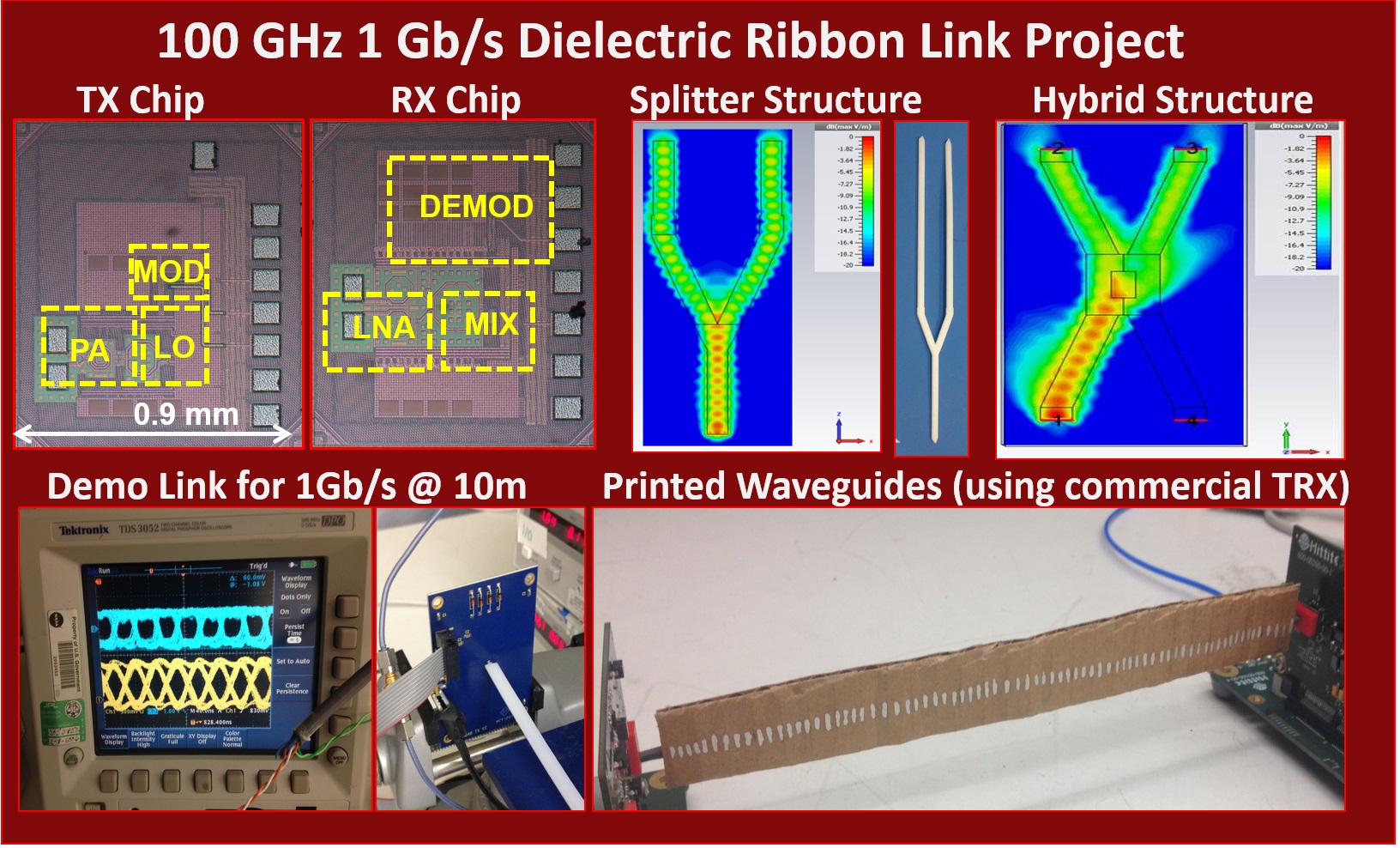mm-Wave Wireless Communications Systems:
mm-Wave communications is an interesting topic if applied correctly but I remain pretty unconvinced of the future beyond the 60 GHz standards (802.11.ad). While mm-wave offers high data rates becasue of the available bandwidth, the NLOS channel conditions are brutal, the equalization is costly, and the D/As, A/Ds and DSP required to support these high bandwidths are all too power consuming for portable devices. I really believe the major challenges of commercializing mm-wave communication are not in the RF, but in the base-band modem. That said, our prior work is still focued on building self-calibrating radios and demonstrating RF front-ends (TXs,RXs, PLLs) in frequency ranges from 100-300 GHz.Honestly, this work would be much more interesting if someone could figure out all the baseband and data converter challenges that are needed to make these technologies commercially sensible.
Demonstrations:
- A full SoC 60 GHz transceiver with base-band processing, and self-calibration (integrated spectrum analyzer and test signal generator) to optimize Tx,Rx, Synth, ADC/DAC and overcome large process variations.
- A simple 300 GHz transmitter chain.
- A 150 GHz transmitter with analog pre-distortion for linearization.
- A 132 GHz frequency synthesizer.
- A 150 GHz traditional heterodyne receiver.
- 110 GHz Digitally Probed Artifical Dielectric (DiPAD) phase demodulator.

mm-Wave Dielectric Ribbon Structures:
The mm-wave dielectric ribbon or waveguide is an interesting topic for data-links and allows relatively low loss transmission of mm-wave over great distances. Lot's of great work has been done in this area by Ali Hajimiri at Caltech, and the team at Sony. More of the theoretical work on propagation has been done by Peter Siegel, Nuria Llombart and others have investigated the media materials and geometry like Rod Kim and Frank Chang at UCLA. My research has been less on the transceivers and data-link aspects, and more focused on the new interesting structures we can build with the waveguide itself (splitters, isolators, printed-waveguides...)
Things Demonstrated so far:
- Basic dielectric ribbon link able to stream a video at 1 Gb/s (not much of an accomplishment)
- An interesting impedance matched spitter structure that allows for multi-casting
- A dielectric-waveguide 90 deg. hybrid that allows signals in 2 directions on 1 cable. [Video]
- 2D Printing of guided wave structures with an inkjet printer and metallized inks.

|